In the ever-evolving landscape of home improvements, the quest for more energy-efficient and environmentally responsible living is a prominent theme. Retrofit double glazing, a solution that involves adding a second layer to existing windows, is increasingly in the spotlight.
Join Atlas Glass as we guide you through the intricate world of this window upgrade. We will explore the benefits of retrofit double glazing, cost considerations, environmental impact, installation process, and more. By the end of this journey, you can make an informed decision about whether retrofit double glazing is truly worth the investment for your home.
Heat loss through windows can be a significant source of energy waste in traditional single-glazed windows. The insulating properties of retrofit double glazing enable your home to retain heat more effectively.
Retrofit double glazing adds a second layer of glass to existing windows, creating an insulating air gap between the old and new glazing. This air gap acts as a thermal barrier, reducing heat transfer and preventing the escape of warm air in winter and heat intrusion in summer.
Retrofitting utilises existing window frames and structures, reducing the need for new materials. By investing in retrofit double-glazing, you help reduce the use of natural resources, lower the carbon footprint of manufacturing, and support a more sustainable building industry.
Traditional window replacement generates a significant amount of waste, from old windows and frames to packaging materials. Retrofitting prolongs the lifespan of existing windows and minimises waste, contributing to a more sustainable approach to home improvement. This upgrade extends the period before windows need to be replaced, reducing the environmental impact of manufacturing new windows and disposing of the old ones.
The improved insulation provided by double glazing helps maintain a more stable indoor temperature, reducing the need for constant heating or cooling. Less reliance on your heating system leads to reduced energy usage, potential savings on energy bills, and a lowered carbon footprint.
Double-glazed windows typically have tight seals and gaskets to prevent air leaks. The additional glass layer adds mass to the window structure. This extra mass helps to absorb and block sound waves, making it more challenging for noise to penetrate your home.
The gap between the two glass panes also acts as a buffer, preventing sound vibrations from easily transmitting from the outside to the inside of your home. The wider the gap, the better the noise reduction.
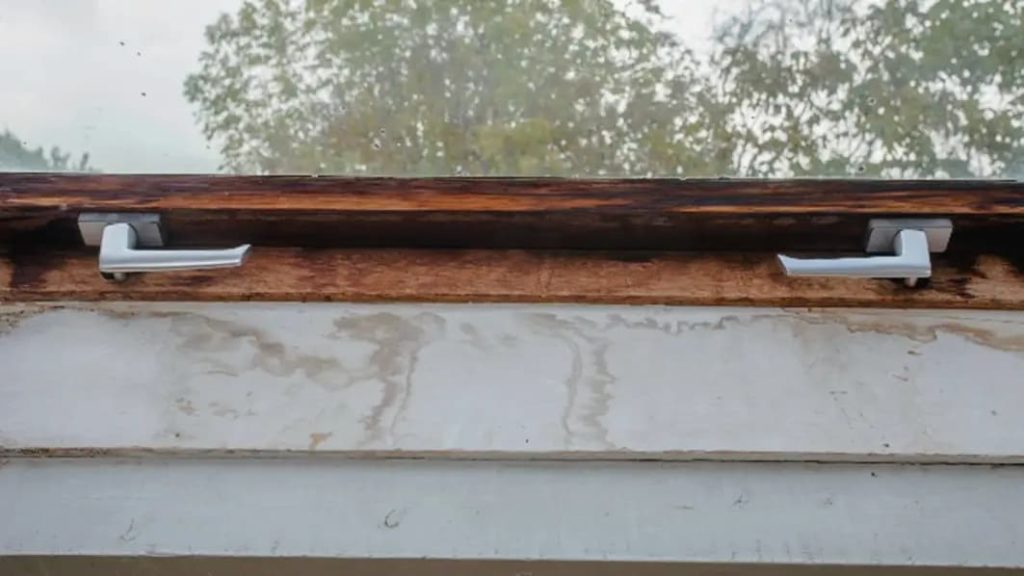
Condensation occurs when warm, moist indoor air encounters cooler surfaces, such as windows. It is a primary cause of dampness and mould growth in homes. Damp environments can lead to the proliferation of dust mites and mould spores, triggering allergies and respiratory problems.
Retrofit double glazing creates an insulating air gap between the old and new glazing. This barrier helps maintain the temperature of the inner glass surface, reducing the likelihood of condensation forming on your windows.
Retrofit double glazing helps maintain a drier and healthier indoor environment. A dry and comfortable living space is more inviting and conducive to wellbeing.
Retrofitting is generally more cost-effective than installing new double-glazed windows. It involves adding a second glazing layer to existing windows, reducing the need for extensive structural changes or window replacement. By reducing heat loss during winter and minimising heat gain in the summer, retrofit double glazing significantly improves the insulation of your existing windows. This method offers long-term energy savings and helps lower energy bills.
In comparison, installing new windows can be a substantial upfront investment. It often requires the complete removal and replacement of existing windows, leading to higher labour and material costs. While new windows can also provide energy efficiency benefits, it may take longer to recoup the upfront costs through energy savings than retrofitting. The initial investment can be a significant factor.
So, is retrofit double glazing worth it? The answer ultimately depends on your priorities and goals. If you value a more energy-efficient, comfortable, and sustainable living environment, retrofit double glazing can be a valuable addition to your home.
Contact Atlas Glass, Auckland's double glazing specialist, for expert guidance or to explore retrofit double glazing options for villas. Our expert team will provide in-depth insights and help you make the best decision for your home. Here's to a more comfortable and eco-conscious living space; get a free quote today!
In our contemporary living spaces, privacy has become an increasingly precious commodity. The desire for tranquillity, solitude, and a shield from the prying eyes of the outside world is a sentiment shared by many. With this growing need in mind, specialised glass types that enhance privacy in windows have emerged as a transformative solution.
Join us as we introduce the innovative world of window glass treatments for privacy, designed to safeguard your space and grant greater security and seclusion. As an expert double-glazing company, we discuss four glass treatment options that add a layer of privacy to your home.
Obscure glass, as the name suggests, is a type of glass that obscures or partially blocks visibility while allowing light to pass through. The glass achieves this effect through its textured or patterned surface, which scatters and diffuses light, making it difficult to see through clearly. The level of obscurity can vary depending on the specific texture or pattern used in the glass. We recommend contacting experts like Atlas Glass for more information about obscure glass types.
Frosted glass is obscured glass featuring a semi-opaque or translucent appearance. This transformation is achieved by sandblasting, acid etching, or applying a frosted glass film to the surface. This glass type is a popular choice for bathrooms and shower enclosures, ensuring the area remains concealed while creating a soft and inviting glow in the interior.
In commercial spaces, obscure glass is used for office partitions, conference rooms, and storefronts to maintain discretion while allowing ample light to flood the room. Its adaptability makes it a preferred choice where privacy is a priority, but natural light is cherished.
Tinted glass is a unique solution that imparts privacy while adding a touch of sophistication to your living or working spaces. Glaziers create this specialised glass by adding a tint, typically a metal oxide, during the glass-making process. The tint absorbs and reflects a portion of the incoming sunlight, reducing the visibility from the outside while maintaining an unobstructed view from the inside.
This glass treatment comes in many variations, including different colour options. The tint can vary from light shades to dark hues, allowing you to customise the level of privacy and the aesthetic appearance according to your preferences. For instance, light grey or bronze tints offer a subtle privacy enhancement, while darker tints like charcoal or bronze provide more pronounced privacy. The choice of tint colour can also influence the overall aesthetics of your space.
Tinted glass enhances privacy while improving your environment's comfort and energy efficiency. It effectively reduces glare from direct sunlight, making it ideal for spaces with excessive sun exposure, such as conservatories or large windows. The tinted layer helps block some of the sun's heat, reducing energy consumption by lightening the load on your cooling system and potentially lowering energy bills.
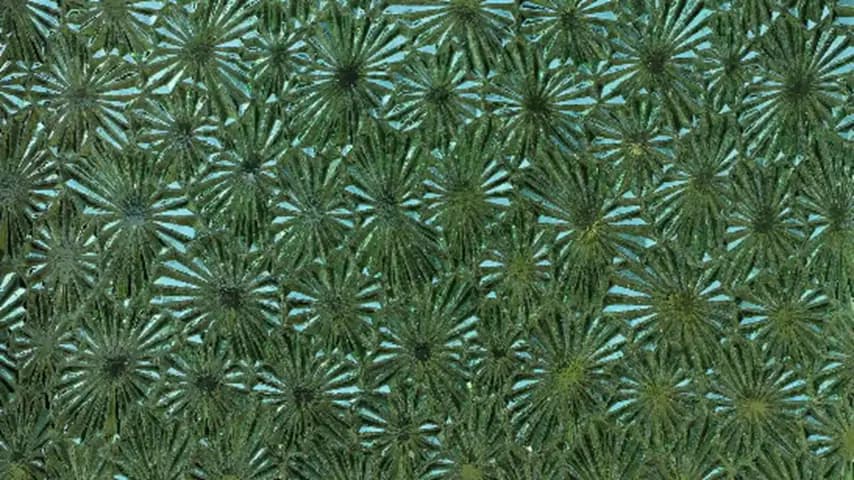
Textured glass is a captivating option for enhancing privacy by introducing intricate patterns and designs. This type of glass features a textured surface that scatters light as it passes through, diffusing it and preventing a clear view from either side. The textured patterns and designs serve as both a functional and decorative element, offering privacy while adding an artistic touch to your space.
Textured glass comes in many patterns and textures, each with a unique visual appeal and privacy level. Renowned for its ability to interact with natural light in a captivating way. Light filters through the textured surface, creating captivating shadows and patterns within your interior space. The diffused natural light enhances privacy and creates an inviting and visually appealing ambience. It softens harsh sunlight, reducing glare to create a warm, welcoming atmosphere.
Textured glass is ideal for spaces needing privacy and an infusion of natural light, such as dining rooms, kitchens, or living areas.
When selecting window glass treatments for privacy, consider the specific room or area you're outfitting and the level of privacy, natural light, and design you desire. Ultimately, the right glass type should align with your individual needs and preferences, ensuring that it complements the functionality and aesthetics of your living or working space.
Contact Atlas Glass for more information if you need help choosing a suitable glass type. As Auckland's trusted glazing specialist, we provide solutions such as double glazing for noise reduction, custom laminate products, and more. Let us help you with a tailored privacy window glass treatment!
Sheet glass is a versatile glass characterised by its flat,thin, and uniform appearance. Due to its smooth and distortion-free surface,sheet glass is suitable for various applications in architecture, construction,automotive, and numerous industrial sectors.
This versatility makes sheet glass perfect for buildings' windows, doors, and facades to windshields and windows in vehicles. Join us, a trusted glass company in Auckland, as we go behind the scenes to uncover how sheet glass is made. This guide will help you understand the complexities behind this fascinating material used in everyday life.
Typically, sheet glass comprises sand, soda ash (sodium carbonate), and limestone, often blended with small amounts of other additives for specific properties.
Sand: High-quality silica sand is the primary ingredient, providing the glass's basic structure and clarity. It's sourced from deposits or quarries and requires cleaning and refining to remove impurities.
Soda Ash (Sodium Carbonate): Thismaterial acts as a flux, lowering the melting point of the mixture. It also contributes to the glass's stability and durability. Soda ash is obtained through the mining of trona ore or chemical processes.
Limestone: Calcium carbonate, derived from limestone, aids in stabilising the glass and preventing its reaction with atmospheric moisture over time. Limestone is usually sourced from quarries.
The glass may include other additives, such as dolomite orcullet (recycled glass shards). Precise blending of these raw materials iscritical, as it determines the glass's chemical composition, transparency,strength, and other properties.
The furnace is the heart of glass manufacturing, transforming raw materials into molten glass. It operates at extremely high temperatures, typically exceeding 1,500°C (2,732°F). The raw materials are carefully measured and fed into the melting tank, where they combine and undergo a series of chemical reactions. These reactions fuse the raw materials into a homogeneous liquid mass. Impurities and gases are released during this process and carefully managed to ensure the glass's desired quality.
The molten glass liquid then exits the furnace and is gently poured onto a bath of molten tin, also known as the float glass technique. The tin's characteristics prevent the glass from mixing with it, creating a uniform surface with minimal distortions. The continuous glass ribbon is then guided through controlled cooling processes to stabilise it further and prevent internal stresses. The process creates a perfectly flat and smooth glass sheet, the basis for many glass applications today.
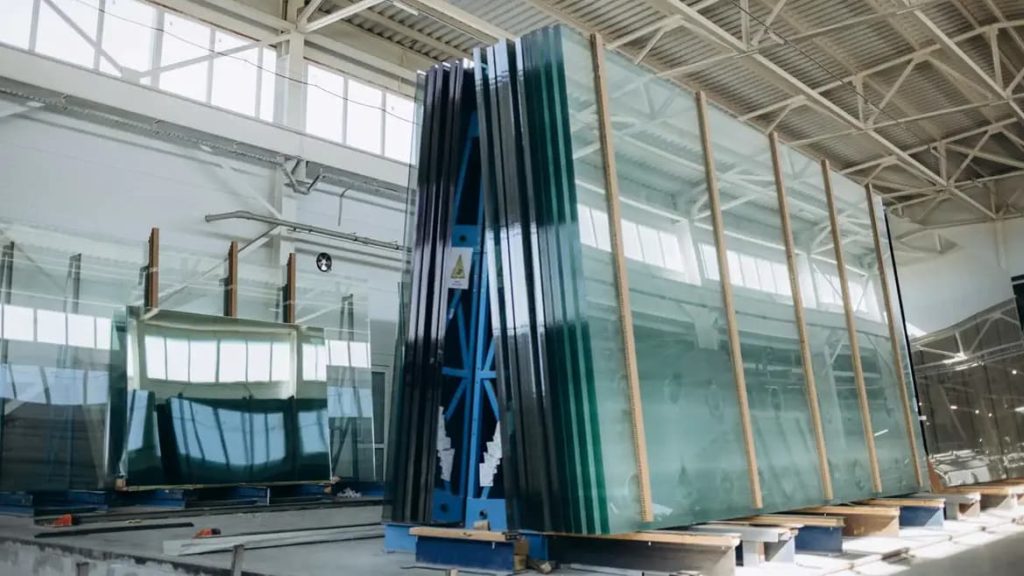
Cutting is crucial in shaping sheet glass into desired dimensions for application. There are various methods of cutting sheet glass, such as:
Manual Cutting: Skilledglassworkers use tools like diamond-tipped cutters to score the glass along thedesired cutting line. The glass is then gently broken along the score line.
Mechanical Cutting: Automated machines equipped with diamond or carbide cutting wheels can precisely cut sheets of glass according to programmed dimensions.
Laser Cutting: Advanced laser technology can make intricate and precise cuts on glass surfaces.
Once cut, the glass undergoes rigorous quality control to identify and address defects. Defective pieces with imperfections such as air bubbles, chips, scratches, or variations in thickness are rejected to maintain the highest quality standards. In some cases, if only a portion of a sheet has defects, salvageable sections are cut out from the defective parts, helping minimise waste and maximise the utility of the glass. The remaining sections, if not salvageable, are usually recycled.
Depending on the desired effect, glaziers can configure your sheet glass into different specialised types. For example, Low-E glass is created by applying a thin, transparent coating typically made of metal or metal oxide layers to the surface. The coating reflects infrared (heat)radiation while visible light can still pass through. Laminated glass is created by sandwiching a layer of plastic (usually polyvinyl butyral) between two or more layers of glass. After forming the glass layers, they are assembled with the interlayer and then heated and pressed under high pressure, creating a glass product with enhanced safety and security properties.
Specialised glass types require distinct processing steps to achieve their unique properties. These steps typically occur post-sheet glass formation, tailoring the glass for specific applications such as energy efficiency, solar control, privacy, or safety.
Located in West Auckland, our glaziers are some of New Zealand’s best! From premium float glass to toughened safety glass units, we produce high-quality glass and glazing solutions in-house, perfect for all your project needs and requirements. To learn more about our glass products and range of services, don't hesitate to contact our friendly team today!
Glass art, with its captivating beauty and intricate craftsmanship, has held a unique place in the realm of creative expression for centuries. Its significance lies in its aesthetic allure and ability to capture the ephemeral nature of light and colour, frozen in time within the delicate contours of glass.
From ornate stained-glass windows in medieval cathedrals to the avant-garde glass sculptures of contemporary artists and glaziers, glass art has enthralled creators and admirers alike. Join us as we journey through time and across cultures to explore the history of glass art.
The earliest evidence of glassmaking dates to 3500 BCE in Mesopotamia, modern-day Iraq. These early glass makers stumbled upon the transformation of sand into glass when desert sands, rich in silica, were fused with the intense heat of their campfires, marking the dawn of a new era in human creativity.
The emergence of glass art can be seen in many countries throughout history, showcasing exceptional craftsmanship and cultural significance. The ancient Egyptians pioneered some of the earliest glass techniques to produce small objects such as beads and amulets. Glass beads held spiritual value and were often placed among the wrappings of mummies to protect the deceased in the afterlife.
The Romans, intheir quest for refinement, perfected the art of glassblowing around the 1stcentury BCE, making glass vessels more accessible and ornate. Glass vesselsadorned with intricate patterns and vibrant colours were status symbols,denoting wealth, and prestige. Glass art then spread to regions like Persia andChina, with each culture infusing its unique aesthetics and techniques intothis art form.
The techniques developed in these ancient times laid the foundation for the diverse and thriving world of glass art that we cherish today.

The medieval and Renaissance periods were transformative eras for glass art, witnessing the preservation of ancient techniques and the birth of innovative styles.
During the MiddleAges, stained glass windows became iconic symbols of Gothic cathedrals.Artisans, known as glaziers, created intricate scenes of religioussignificance, using vibrant coloured glass to depict biblical narratives andsaints' lives. These stunning windows adorned places of worship and served aseducational tools, illustrating religious stories for the largely illiteratepopulation of the time.
The Renaissance era brought with it a renewed interest in classical art and culture, which had a profound impact on glass art. Venetian glassmakers, particularly on the island of Murano, led the way with their exceptional craftsmanship. The invention of crystal-clear glass, or "cristallo", revolutionised glass art and enabled the creation of finely detailed and delicate glassware. Artists like Angelo Barovier and his descendants pushed the boundaries of glassblowing, creating intricate vessels and sculptures, now prized as collector's items.
One of the most famous examples of Renaissance glass art is the "Luck of Eden hall," a brilliantly coloured and intricately decorated glass beaker from the 13thcentury, now housed in the British Museum. This artefact showcases the fusion of Eastern and Western influences on glassmaking during this period.
The Studio Glass Movement, a pivotal moment in the history of glass art, emerged in the mid-20thcentury as a radical departure from traditional glassmaking practices.
In 1962, HarveyLittleton, a ceramics professor, organised a glassblowing workshop at theToledo Museum of Art. This event marked the birth of the Studio Glass Movementand a fundamental shift in the history of glass art, as it shifted from beingprimarily an industrial process to one of individual artistic expression.
The Studio GlassMovement encouraged artists to explore glass as a creative medium, breakingfree from the constraints of large-scale production. With the introduction ofsmall, portable furnaces, artists gained the ability to work with glass intheir studios, leading to unparalleled experimentation and innovation.
Contemporary glassart is a vibrant and diverse field encompassing various styles and techniques.Artists working in glass today often blur the lines between traditionalcraftsmanship and cutting-edge innovation. Some focus on traditional forms likeblown glass vessels, creating intricate and colourful pieces. Others experimentwith sculptural forms, pushing the boundaries of what glass can express.There's also a strong emphasis on interdisciplinary collaboration; glassartists often work alongside other artists, designers, and scientists to createunique installations and artworks.
Contemporary architects and designers increasingly incorporate glass art into their projects, using it to create stunning facades, partitions, and interior installations. Public sculptures made of glass are also becoming more prevalent, allowing viewers to engage with art in everyday urban environments. These installations often play with light and transparency, creating unique visual experiences for passers by.
Glass art has had a profound influence on culture and society. It is the main component in intricate stained-glass windows in churches and cathedrals, telling stories and conveying religious messages through art. In decorative contexts, glass art has adorned homes, palaces, and public buildings, reflecting the aesthetics and tastes of different periods. In functional contexts, glass containers have revolutionised food storage and transportation, impacting daily life.
The art form's ability to capture light, colour, and form has fascinated humanity for centuries, making it an integral part of our cultural heritage.
The history of glass art is not a static narrative; it is a living testament to the boundless potential of human imagination. It invites us to explore, create, and marvel at the world through its translucent beauty.
To bring beautiful, high-quality glass into your home, look no further than Atlas Glass, a reputable glass supplier in Auckland. Contact us today to explore the world of high-quality glass and let your imagination soar as you create your masterpieces in this timeless medium.
Choosing the right glass for each purpose is essential, and laminated glass is consistently dependable and versatile. But what is laminated glass? It is a unique glass type that comprises layers bonded with a durable interlayer, holding it together and offering added strength and resilience. This composition provides laminated glass with unique properties, making it an indispensable choice for several residential, commercial, and automotive applications.
Below, we discuss the various applications laminated glass sees in different situations and how a reputable double-glazing company can help you utilise this unique choice in your home windows.
Laminated glass is created by sandwiching a resilient and transparent interlayer, often made of polyvinyl butyral (PVB), between two or more layers of glass. These layers are then subjected to heat and pressure, bonding them securely. When laminated glass meets impact or force, it may crack but generally remains adhered to the interlayer instead of shattering into dangerous shards like standard glass.
This prevents the glass from breaking apart, enhancing safety and security by reducing the risk of injuries from sharp glass fragments. This unique construction contributes to laminated glass's noise reduction and UV-blocking properties. It's an excellent choice for applications where safety, comfort, and protection are paramount.
Safety Considerations: Laminated glass enhances safety by reducing the risk of injury from broken glass. In case of an impact, the glass may crack but typically stays intact, held together by the interlayer. This is especially important in homes, particularly those with children or pets, as it minimises the danger posed by sharp glass fragments. In regions prone to natural disasters like hurricanes or earthquakes, laminated glass prevents shattering and reduces the risk of flying glass shards during severe weather events. In accidents, such as impact from falling objects, laminated glass can minimise injuries by remaining as a whole, even if it cracks.
Prevents Break-Ins: Laminated glass acts as a formidable deterrent against break-ins. Intruders find it challenging to penetrate laminated glass, as it remains intact even when cracked. This added security layer helps protect your home and belongings, offering peace of mind.
Noise Reduction: Laminated glass provides excellent noise insulation, making it ideal for homes in noisy urban areas or near traffic. The interlayer's properties help dampen sound vibrations, creating a quieter and more comfortable living environment.
Security Enhancements: In commercial buildings, security is of utmost importance. Laminated glass provides an effective barrier against forced entry and break-ins. Even if the glass cracks upon impact, it remains in place, making it difficult for intruders to gain access. This feature is crucial for protecting valuable assets and inventory and ensuring the safety of employees and customers.
UV Protection for Merchandise: Retail stores, galleries, and commercial spaces often showcase merchandise sensitive to ultraviolet (UV) radiation, such as artwork, textiles, and high-end retail items. Laminated glass can be designed with UV-blocking properties, preventing harmful UV rays from damaging or fading merchandise over time. This protection helps maintain the integrity and value of displayed items, reducing the need for replacements or refurbishments.

Car Safety: Laminated glass is primarily used in windshields to improve car safety significantly. In the event of an impact or collision, the laminated windshield remains intact, preventing the glass from shattering into dangerous shards and reducing the risk of injuries to the vehicle's occupants. It also helps keep the driver and passengers inside the vehicle, enhancing their safety during accidents.
Reduces Road Noise: Laminated glass effectively dampens sound vibrations, resulting in a quieter cabin environment. Reducing road noise, wind noise, and external disturbances enhances driving comfort and reduces fatigue. Passengers can enjoy conversations, music, and phone calls with less interference from external sounds.
Incorporating laminated glass into various aspects of our lives, from residential to commercial and even in automobiles, has revolutionised safety, security, and comfort in these spaces.
Whether you're seeking protection from break-ins, UV radiation, or simply a more serene and peaceful environment, laminated glass is the versatile solution you've been looking for. Elevate your surroundings with the unmatched advantages of laminated glass, and experience peace of mind like never before.
As Auckland's double-glazing specialist, Atlas Glass features a wide range of glass options for your needs—from windows to art projects. Our in-house glass oven allows us to craft custom laminate pieces according to your design. Contact us today to find out how we can help you with a suitable glazing solution.
Selecting the right window frame is a pivotal decision that can significantly impact your space's aesthetics and functionality. Understanding the characteristics of different window frame options empowers you to make an informed choice that aligns seamlessly with your architectural vision and practical needs.
This blog post covers the diverse world of window frame types, offering insights and considerations to guide you towards the perfect frame type for your project.
Timber window frames are a timeless and classic choice, cherished for their natural beauty, warmth, and versatility. Wood's natural grains and textures create a warm and inviting ambience, adding a touch of elegance to any space. Timber frames can be stained or painted in various colours to suit interior design styles. These frames are available in different styles, sizes, and shapes for various architectural designs and preferences.
Beyond their visual appeal, timber frames offer excellent insulation properties. While wood is a natural insulator,double-glazing wooden frames help to regulate indoor temperatures and reduce energy consumption for heating and cooling. The insulative properties can lead to energy savings and increased comfort.
Timber frames require regular maintenance to safeguard their appearance and durability. These frames can boast a prolonged and robust lifespan with protective coatings or finishes to avert rot, moisture damage, and insect infestations. However, some consistent upkeep is required.
Aluminium window frames are known for their sleek and contemporary appearance and are popular for modern construction and home design. They are available in various styles and finishes, allowing them to integrate with different architectural designs and interior aesthetics seamlessly.
Aluminium window frames require little maintenance and are resistant to rust, corrosion, and weathering, making these frames suitable for various climates.
In addition to being a recyclable, environmentally friendly choice, these frames have excellent thermal performance. This benefit is especially true when combined with energy-efficient glass, helping to regulate indoor temperatures and reduce energy consumption.
uPVC (unplasticised polyvinyl chloride) window frames are a contemporary and energy-efficient option for windows in homes and businesses. uPVC frames utilise durable and low-maintenance materials known for their excellent insulating abilities. They help maintain indoor comfort by preventing heat loss in colder months and heat gain in warmer months, which can lead to energy savings.
uPVC is also resistant to moisture, corrosion, and rot, making them easy to maintain. This material is durable and recyclable, ensuring long-lasting and sustainable frames that don't require painting or sealing.
uPVC window frame types come in various styles, designs, and finishes, suitable for different architectural preferences and interior décor. They can mimic the appearance of wood, offering a versatile choice for those who want the look of timber frames without the upkeep.
Steel window frames offer a combination of strength, durability, and sleek design, making them highly desirable across various architectural styles. A significant advantage of steel frames lies in their robustness and ability to withstand environmental factors—making them ideal for areas with harsh climates.
Steel window frame types are particularly adept at supporting larger glass panels, facilitating expansive views and abundant natural light. These frames are perfect for individuals seeking a minimalist and industrial aesthetic that harmonises perfectly with contemporary design concepts.
However, it's important to note that steel window frames require maintenance to counter rust and corrosion. Regular upkeep involving painting or coating can preserve their appearance and extend their longevity.
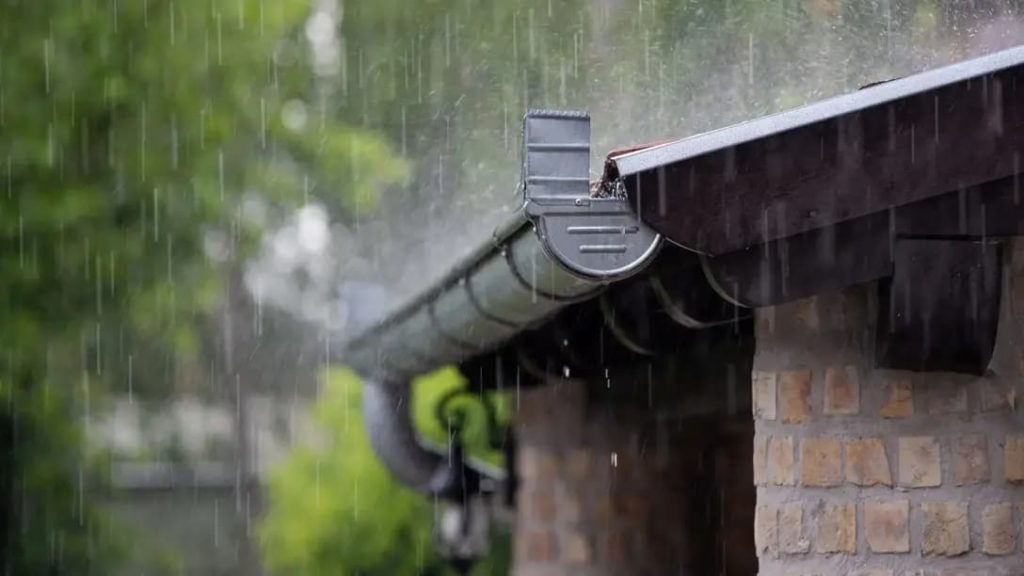
Tailor your choice to the climate you're in. For regions with extreme temperatures, frequent rain, or near humid and coastal areas, opt for window frame materials resistant to deterioration.
Different frame materials offer varying levels of thermal performance. Assess your insulation needs to strike the right balance between comfort and energy efficiency.
Your frame should seamlessly integrate with your home's architectural style. Whether modern, traditional, rustic, or minimalist, the window frame should complement and enhance the overall design.
Define your budget early on, as different materials and designs come with varying price tags. Strategic budgeting ensures that your choice aligns with your financial parameters.
Consider how much time and effort you will invest. Some materials require more up keep than others—factor in routine maintenance tasks when deciding.
As one of the best glaziers in the country, Atlas Glass can help you maximise the potential of timber frames with double glazing. Experience heightened insulation, reduced energy consumption, and a refined aesthetic. Elevate your space today; contact us for moreinformation onupgrading your timber frame glass.
Condensation is a frustrating problem many homeowners face, causing damage, discomfort, and potential health risks. Understanding the root causes of condensation in your home and implementing practical solutions is vital for creating a healthier, more comfortable living environment. From implementing ventilation strategies to installingretrofit double glazing, we delve into helpful tips, techniques, and maintenance practices to help you combat condensation and maintain a dry, well-ventilated home. Following these steps, you can protect your property, enhance indoor air quality, and ensure a more enjoyable living space for you and your family.
Condensation occurs when warm, moisture-laden air meets cooler surfaces, resulting in the formation of water droplets. Excessive condensation in a home can cause adverse effects, such as:
Moisture accumulation can cause wood to rot, causing structural instability and compromising the integrity of your building. The excessive moisture can seep into drywall, causing it to become saturated and potentially leading to peeling paint, stains, and visible water damage. Condensation can also warp surfaces, such as wooden floors and furniture, making them prone to warping, swelling, and distortion. Over time, these issues can result in costly repairs and diminish the overall aesthetics of your home.
Excess moisture provides an ideal breeding ground for mould and mildew, posing significant health risks to you and your family. Mould spores released into the air can trigger allergies, respiratory problems, and other health issues, especially in individuals with asthma or weakened immune systems. Prolonged exposure to mould and mildew can lead to chronic sinusitis, coughing, wheezing, skin irritation, and even lung infections.
Condensation contributes to elevated humidity levels, creating an environment conducive to the proliferation of dust mites, bacteria, and other indoor pollutants. Dust mites can trigger allergic reactions and worsen asthma symptoms, while bacteria and viruses that thrive in moist environments can increase the risk of respiratory infections. Excessive moisture can create a musty odour, making the indoor environment unpleasant and uncomfortable, leading to poor air quality and a generally unhealthy living environment.
Various factors contribute to condensation issues, including high humidity levels, inadequate ventilation, temperature differentials, and poor insulation. Here are some ways you can combat condensation in your home.
Open the windows when weather conditions permit to increase airflow and reduce moisture build-up. This allows fresh air to circulate, replacing humid indoor air with drier outdoor air. Additionally, use exhaust fans in bathrooms and kitchens to expel moisture at its source. These fans effectively remove steam and odours, preventing excess humidity from accumulating in these areas.
Consider installing mechanical ventilation systems such as whole-house fans or heat recovery ventilators (HRVs) for more comprehensive ventilation. Whole-house fans draw in fresh air from outside and expel stale air, promoting air circulation throughout your home. HRVs, on the other hand, not only provide fresh air but recover heat from the outgoing air, reducing energy loss. These mechanical ventilation systems ensure consistent air exchange, effectively controlling humidity levels and preventing condensation.
Controlling humidity levels is crucial in the fight against condensation in your home. One effective method is to use dehumidifiers in areas with high moisture levels. These devices extract excess humidity from the air, helping to maintain a balanced and drier indoor environment. Place dehumidifiers strategically in rooms where condensation occurs, such as basements, bathrooms, and laundry areas.
In addition to using dehumidifiers, minimise activities that release moisture into the air, such as drying clothes indoors or boiling water without proper ventilation. Instead, opt for outdoor drying or use a well-ventilated area for activities that generate steam. Proper ventilation during these activities can redirect moisture outside and prevent it from accumulating indoors, reducing the chances of condensation.
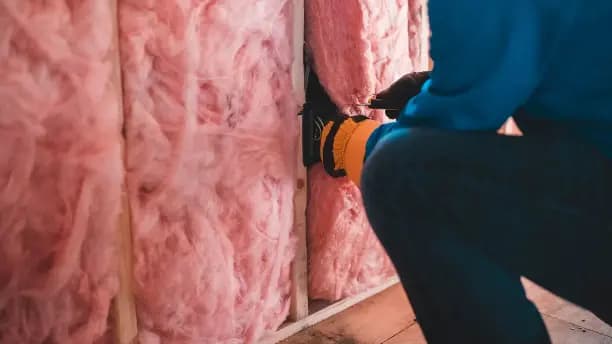
Adding insulation to walls, roofs, and floors can minimise temperature differentials and prevent condensation from forming on cold surfaces. Insulation acts as a barrier, reducing heat transfer and maintaining consistent temperatures throughout your home.
Retrofit double glazing is an effective method to enhance insulation and reduce condensation. It involves installing windows with two layers of glass separated by a layer of air or gas. This design significantly reduces heat transfer through the windows, preventing the formation of cold surfaces where condensation can occur. Double glazing also improves energy efficiency by minimising heat loss, providing additional benefits beyond condensation prevention.
Take care to seal any air leaks around windows and doors, as they allow warm, moisture-laden air to infiltrate your home. By sealing these leaks and reinforcing insulation around windows and doors, you create a tighter building envelope, reducing air exchange and minimising the chances of condensation forming.
By implementing the practical tips, techniques, and maintenance practices discussed in this blog, you can create a healthier, more comfortable living environment for you and your family. Bungalow retrofit double glazing is a proven method to improve insulation, minimise heat transfer, and eliminate condensation in your home. Say goodbye to condensation and enjoy a drier, more comfortable home. Act today and reach out to Atlas Glass for a free consultation.
Windows are crucial in maintaining a comfortable and safe living space. Double-glazed windows feature a unique construction that offers a range of advantages contributing to a healthier and more enjoyable home. From improved thermal insulation and condensation prevention to enhanced security and noise reduction, double-glazed windowspromote wellbeing and comfort in numerous ways. Join us as we delve into the benefits of double-glazed windows and why investing in them is a smart choice for you and your loved ones.
Double-glazed windows consist of two panes of glass with a gap between them, filled with air or an inert gas like argon. This gap creates an extra layer of insulation, reducing the heat that can escape or enter your living space, acting as an effective barrier against heat transfer and enhancing thermal insulation within your home. This insulation barrier helps maintain a more stable indoor temperature, keeping your home warm in winter and cool in summer for a cosy and enjoyable living environment throughout the year.
Condensation occurs when warm, moisture-laden air encounters cooler surfaces, leading to the formation of water droplets. This moisture build-up can negatively impact the health of occupants and the property's condition. Excessive moisture can increase the risk of mould growth, triggering allergies and respiratory problems. It can also cause damage, such as rotting wood and peeling paint, affecting the integrity of your window frames and the surrounding areas.
Double-glazed windows act as a powerful deterrent—the insulating layer between the glass panes helps to maintain a consistent temperature on the inner glass surface, reducing the likelihood of moisture accumulating on windows.
Excessive noise pollution can harm health and wellbeing, causing stress, sleep disturbances, and reduced productivity. Fortunately, double-glazed windows offer an effective solution for creating a quieter and more peaceful home environment. One of the benefits of double-glazed windows is their thick construction, helping to absorb and block out unwanted noise, creating a tranquil indoor space. Whether it's the bustling traffic outside or noisy neighbours, double glazing significantly reduces the amount of sound that enters your home, allowing you to enjoy a peaceful and restful atmosphere.
The design and construction of double-glazed windows provide enhanced security features that contribute to a safer living environment. Their multiple layers of glass and robust frame materials act as a deterrent against potential intruders, making it significantly more difficult for unauthorised individuals to break through, giving you peace of mind and a sense of protection. Beyond the security aspect, these windows also contribute to the safety of your household. In the event of an accident, the sturdy construction of double-glazed windows minimises the risk of shattered glass, reducing the potential for injuries from broken shards.
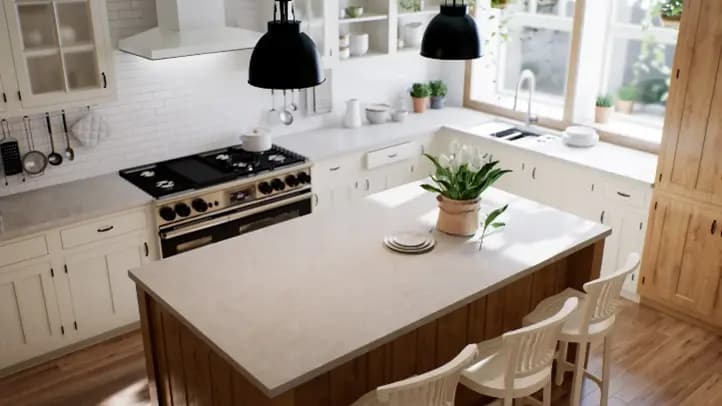
Prolonged exposure to UV rays can lead to skin damage, premature ageing, and an increased risk of skin cancer. Moreover, UV radiation can cause fading and deterioration of furniture, flooring, and other belongings within our homes. Combining multiple layers of glass and special coatings in double glazing helps block out a significant portion of the harmful UV rays from entering your home. Investing in double-glazed windows creates a healthier home environment that safeguards the wellbeing of occupants and preserves the quality and appearance of your valuable belongings.
Double-glazed windows are specifically designed to minimise heat transfer, providing an effective thermal barrier for your home. The combination of two glass panes and an insulating layer in between significantly reduces the amount of heat that can escape during winter or enter during summer, resulting in reduced energy consumption. By keeping your home well-insulated, double-glazed windows prevent the need for excessive heating or cooling, leading to lower energy bills and long-term cost savings. Moreover, the energy efficiency of these windows contributes to a more sustainable lifestyle, as it reduces your carbon footprint by lowering greenhouse gas emissions associated with energy consumption. By investing in double-glazed windows, you not only create a comfortable living environment but also contribute to a greener and more cost-effective home.
The benefits of double-glazed windows for a healthy home are undeniable. Contact Atlas Glass today for a free quote and consultation on double glazing in Auckland. Our team of experts will guide you through the process, helping you create the perfect double-glazed windows tailored to your specific needs. Act now and embark on the journey to a healthier, more comfortable living space with Atlas Glass.
A pet brings immense joy and companionship into any household, but it also comes with responsibilities. One such responsibility is providing your furry friend with easy outdoor access for bathroom breaks, exercise, and exploration. This responsibility is where a pet door can be a game-changer. However, many pet owners are often hesitant about installing pet doors and ask local Auckland glaziers whether you can put a pet door in a glass door.
The good news is that pet door retrofitting is a viable solution that allows you to install a pet door in your existing glass door. In this blog post, we will explore pet door retrofitting, the types of glass you can do this with, and the pros and cons of this option.
Pet door retrofitting is installing a pet door into an existing door, such as a glass door, without compromising its structural integrity or aesthetics. Unlike traditional pet doors installed in walls or standard wooden doors, retrofitting a pet door into glass requires specific considerations to ensure a secure and functional installation.
Not all glass doors are suitable for retrofitting a pet door. The type of glass plays a crucial role in determining whether it can accommodate a pet door. Generally, you can consider the following glass types for retrofitting:
This type of glass is highly durable and heat-treated to enhance strength. Tempered glass is considered one of the best options for retrofitting a pet door because of its sturdiness and resistance to breakage.
Double-glazed glass doors have two glass panels separated by an insulating space. These doors can accommodate pet door installations in the glass panel without affecting the door's insulating properties.
Low-E (Low Emissivity) glass helps reduce heat transfer and is common in energy-efficient doors and windows. It is essential to ensure that the pet door installation does not compromise the insulating properties of the Low-E glass.
Laminated glass consists of multiple layers with an interlayer that holds them together, providing extra strength and safety. Installing a pet door in laminated glass is possible, but professional installation is crucial to maintain its integrity.

Installing a pet door in glass offers many benefits to homeowners, including:
Retrofitting glass with a pet door allows for easy and independent access for your pets. Your fur baby can go outside whenever they need to relieve themselves or play.
There's no need to worry about your pet door looking shabby. When professionally installed, a pet door installed in a glass door seamlessly blends with the existing design, preserving the aesthetics of your home.
Many manufacturers design modern pet doors with energy efficiency in mind. Nowadays, these doors feature weatherproof seals that help maintain indoor temperatures, thus reducing energy costs.
You don't need to worry about impacting the existing structure of your home. Retrofitting eliminates the need for significant alterations to your home, making it a reversible and non-intrusive option.
While there are many benefits to retrofitting a pet door, there are a few things to consider before committing to the process. These include:
Retrofitting a pet door into a glass door is typically more expensive than installing one in a traditional door or wall. The higher cost is due to the specialised nature of the installation.
Intruders can potentially exploit pet doors to gain access to your home. However, many modern pet doors have security features such as locking mechanisms to address this concern.
The installation process involves cutting into the glass, which can weaken it. Therefore, professional installation by a glazier in Auckland or your region is vital to minimise the risk of damage.
If you live in a rental property, the landlord may not permit modifications like retrofitting a pet door in the glass door. If you rent, it's vital to consult with your landlord to discuss pet door retrofitting.
Pet door retrofitting is a practical solution for pet owners who want to provide their furry companions with easy outdoor access through a glass door. With the right type of glass and professional installation, you can ensure your pet door's safety, convenience, and aesthetic appeal.
While you must consider some drawbacks, the benefits of retrofitting a pet door often outweigh the cons, making it a worthwhile investment in your pet and home. For the best result, do thorough research, consult with professionals, and choose a high-quality design that suits your needs and your pet's size and habits.
If you are looking toretrofit double glazing in Aucklandto install a pet door, get in touch with the Atlas Glass team. We will assess your needs and supply the products you need on time and at competitive prices.
Not all glass materials are recyclable through your household recycling programme. While glass bottles and other common glass objects are collected in recycling bins along with paper and plastic materials, recycling plants still occasionally reject treated products like glass windows or oven-proof glass.
Although not yet widely available, collecting these glass items and reprocessing them into a sand-like material before repurposing them into insulation or for use in new glass manufacturing is gaining traction in New Zealand. Until this becomes widespread, however, there are still many ways to upcycle treated glass or repurpose it in your home
Repurposing old glass materials is an environmentally friendly method to create useful pieces around the home or craft works of art. For creatives and homeowners looking for fun things to do with glass, contact a reputable glass supplier in Auckland, such as Atlas Glass, to receive a quote on high-quality glass products for your next project.
Broken glass shards don’t simply have to be thrown away but can be used to form creative new items. These can include stained glass, mosaics, or sculpture art pieces you can display in your window to catch the light in gorgeous ways or as a statement decoration in your home. Add flair and personality to your living space by repurposing old glass objects into new, innovative works of art. Add a string of LED lights to spare glass bottles for a fuss-free illumination source or fill them with coloured sand and glitter as a weekend art project for the kids.
Alternatively, crush shards of glass and file them down thoroughly for a colourful gravel replacement, for use as pond rocks in your backyard, or as glass beads in smaller jewellery pieces. The indoor and outdoor decor options are limitless according to your imagination.
Things you can do with glass include using it for storage according to your needs. Use large panes of glass to craft glass shelving or clear storage containers to organise larger objects. Utilise small glass bottles or jars to store pantry items in the kitchen or use them as organisers for accessories or small nick-knacks in the bathroom or bedroom.
Renowned for their clarity and durability, larger glass pieces can be cut to size and used as countertops or backsplashes as protection in bathrooms or kitchens. Bottles and jars can be repurposed in fun and eco-friendly ways as bird feeders, watering solutions for plants or terrarium pots and candle holders. Versatile and long-lasting, the things you can do with glass in your home are endless.
Glass is a useful and versatile material that can be repurposed or upcycled for almost every need. In addition to all these amazing things you can do with glass, don’t forget to increase the value of your home through retrofit double glazing. Double glazing your windows can improve energy efficiency and help you save on electricity bills throughout the seasons, simultaneously providing insulation and noise reduction.
As Auckland’s double-glazing specialists, Atlas Glass can cut your glass to size and provide insight and advice for your next project. Reach out to our friendly team for more information today!